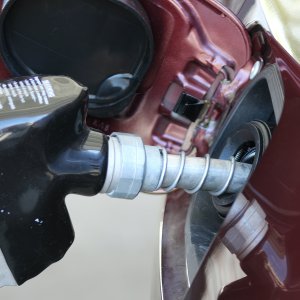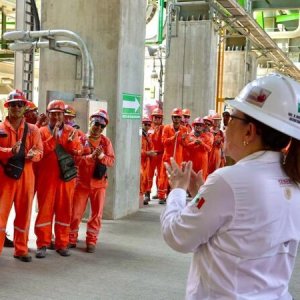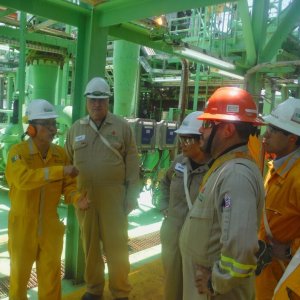A Transparent Middleman with a Long-Term Vision

STORY INLINE POST
Q: What is FMP’s vision for Mexico and how does it contribute to the country’s development?
A: The Mexican Petroleum Fund has three major objectives. The first is to receive all the revenues from the exploration and production activities taking place in the country and then make the corresponding distribution stated by law to the different government funds, stabilization funds and also to the federal treasury, which is managed by the Ministry of Finance, to be used for the federal budget.
The second obligation is related to the financial administration of the contracts for E&P activities in the country. The contracts are signed between oil and gas operators and CNH, which acts as a representative of the Mexican state. Although all the technical aspects of the contracts are enforced by CNH, FMP is in charge of the financial aspects, meaning the management of revenues. We calculate the shares that correspond to the Mexican state and to the operators, and make sure that the revenues received from the operators comply with what is established in each E&P contract. We also follow up the revenues of each contract and make sure that the state receives its corresponding share.
The final obligation of the FMP is related to the Sovereign Wealth Fund. 2017 was the first year we received funds that were accumulated in the Sovereign Wealth Fund and in 2018 we started investing these funds on behalf of the Mexican state.
Those are the three main obligations of the FMP. However, an additional obligation that derives from the previous three is related to transparency. When PEMEX was the sole producer of oil and gas in Mexico, it had an internal procedure for calculating its revenues, the share for the state and what it had to send to the federal treasury.
All this information was then sent to Mexico’s revenue service (SAT), but there was limited information disclosed to the public. However, under this new scheme, FMP is in charge of publishing a considerable amount of information related to PEMEX’s revenues and disclosing it to the public. Whoever is interested in tracking these revenues can rest assured that these are available on FMP’s website, including the revenues received by every other operator in compliance with what is established in the E&P contracts. This is a very important responsibility for FMP, and it could be argued that it is the most important aspect we oversee.
Q: What was the biggest challenge of setting the FMP as a middleman for oil and gas revenues?
A: The biggest challenge was probably technological. The FMP’s regulating law was issued in August 2014 and we started operations in 2015. The first E&P contracts were signed in September 2015 and by that time, we had to build the entire IT infrastructure required to receive and manage all the information from the operators and start calculating the percentages of shares that corresponded to them and to the state.
The entire IT infrastructure required by the Fund to receive all the information from the new E&P companies, as well as from the authorities, is developed internally. This includes receiving a great deal of sensitive information, such as personal and industrial data, and it is important all this is stored according to the Central Bank standards of security.
Therefore, the Ministry of Finance, which is the Fund’s trustor, and the Central Bank, acting as trustee, agreed to develop all the required IT infrastructure internally. It is also important to acknowledge that all the information that the Fund receives from the operators of the new E&P contracts, related to oil and gas production, commercialization prices, cost of developing new oil wells and other investments engaged by the contractors is published on our website. The intention is that any person that visits our website will be able to download data associated with volumes and prices reported by authorities and private companies and be able to replicate our calculations to make sure that we are performing our job correctly.
Q: Was the Assignations and Contracts Payment System (SIPAC) developed alongside other governmental agencies?
A: No, it was developed in-house but with the collaboration from other government agencies. As part of our monthly calculations, we receive information from the Ministry of Finance, from CNH and from oil companies, so it is key that all these authorities and participants can access the system, provide information and go through it at any point in time to meet their respective responsibilities. We were able to develop the IT infrastructure thanks to the feedback from all of them, as it was necessary to understand each one's needs and design the system accordingly. Ultimately, the design of the SIPAC is based on the requirements and needs of the authorities and contract holders.
Q: The Norwegian sovereign fund model has proven to be successful for a sustainable long-term vision. What best practices did the FMP take from this model?
A: We are observing best practices not only from sovereign wealth funds, but also from asset managers worldwide. In fact, recently, the International Monetary Fund visited the FMP to perform a study, with one of the objectives being to ensure that the transparency and governance of FMP were in line with best practices observed by Sovereign Wealth Funds worldwide.
The complete results of the study have not been published but preliminary results have shown that we comply with all these best practices, especially transparency, governance and investment guidelines.
The main differences between the Norwegian model and ours arise from the fact that the size of the resources under administration differ radically. The Norwegian fund is fully mature and the FMP is in the starting phase and this fact reflects on our investment guidelines, which are considerably less risk-averse than those of a fund in a mature state.
Those guidelines include some of the best practices other asset managers follow, such as the existence of a benchmark portfolio, definition of asset classes eligible for investment and minimum credit ratings for each asset class.
Other sovereign wealth funds have adhered to the Santiago principles, which include best practices related to governance, transparency, investment and risk management practices among Sovereign Wealth Funds. The goal of the International Monetary Fund study performed at the FMP was to evaluate how close our internal processes adhere to those principles.
Q: What is the challenge of managing the Sovereign Wealth Fund?
A: The challenge right now is to establish the foundation of a long-term portfolio that ensures that our current wealth, in the form of oil and gas, will span across generations by turning it into financial assets, in the shape of an investment fund. The FMP is in its starting phase and accordingly its initial portfolio would be completely different to that of a mature Sovereign Wealth Fund such as Norway's. The latter includes all asset classes around the globe, such as investments in real estate and in emerging markets.
In the short term, our challenge is to establish a fixedincome and US dollar-only portfolio and gradually transform it into a more complex portfolio. With time, and as we are able to accumulate additional funds, we should include more asset classes and different currencies in our portfolio.
Q: Where is FMP focusing most of its activities considering that PEMEX remains the biggest player in the country?
A: The biggest load of our work comes from new E&P companies, meaning new operators, which as mentioned before, must send all the information required by FMP to calculate royalties. In fact, we receive five different levels of information, which is also used by the Ministry of Finance for auditing activities. Although only 0.5 percent of the revenues for the fund come from the new operators, close to 100 percent of the information is coming from them.
Q: What other aspects of the oil and gas industry has FMP enforced?
A: The FMP has become an excellent benchmarking tool to ensure that the industry in Mexico becomes more efficient. Looking at the information SAT receives from PEMEX and comparing it to that received by the new players, one can see how costs have dropped drastically. While these costs do not fit yet with those seen in countries with a more developed oil and gas industry like the US, we can certainly see costs dropping.
























